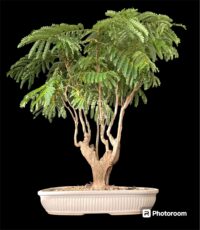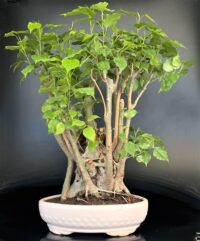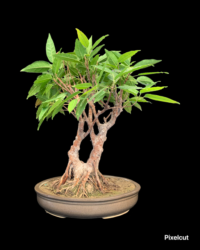How to Care for Your Banyan Bonsai Tree
The Complete Guide to Banyan Bonsai Tree Care: Tips for Growing a Mystical Bonsai at Home
Introduction
Banyan Bonsai tree holds a special place in the hearts of many, especially in India where they are revered as the national tree. In this article, we will delve into the fascinating world of Banyan bonsai tree and provide you with all the essential information you need to successfully nurture and grow your mystical bonsai at home.
The Significance of the Banyan bonsai Tree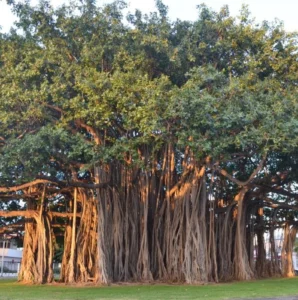
Did you know that the Banyan bonsai tree holds the esteemed title of being the national tree of India? This majestic tree carries deep cultural and spiritual significance, and it is often associated with longevity, strength, and stability. By exploring the art of banyan bonsai care, you can connect with this rich heritage and create a flourishing miniature representation of this iconic tree.
Easy Care for Banyan Bonsai tree.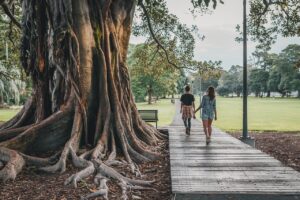
If you’re new to the world of bonsai, fear not! Banyan bonsai care is known for being relatively easy, making it an ideal choice for beginners. With the right knowledge and techniques, you can successfully nurture and maintain a banyan bonsai that thrives in your own home.
The Allure of Small and Compact Size of Bargad Bonsai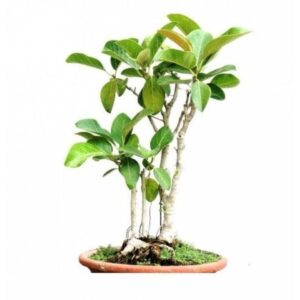
One of the captivating features of a banyan bonsai is its small and compact size. This miniature tree exudes an irresistible charm that can transform any space into a peaceful oasis. By carefully pruning and shaping its branches, you can create an enchanting masterpiece that brings a touch of nature’s beauty into your living environment.
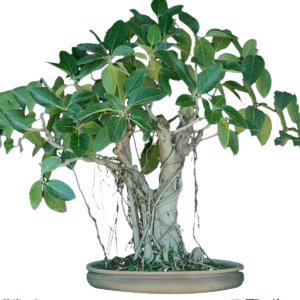
The Resilient Structure and Aerial Roots of Bargad Bonsai / Banyan Bonsai tree
The banyan tree’s resilient structure and unique aerial roots add an element of intrigue to its bonsai form. These aerial roots, which grow from the branches and descend to the ground, create a captivating visual display. As a bonsai enthusiast, you’ll have the opportunity to carefully manage and shape these roots, further enhancing the overall aesthetic appeal of your banyan bonsai.

The Satisfying Experience of Banyan Bonsai Care

Caring for a banyan bonsai tree can be an incredibly rewarding and satisfying experience. As you nurture your miniature tree, you’ll witness its growth and development over time. The act of tending to its needs, such as watering, pruning, and providing adequate sunlight, allows you to establish a deep connection with your bonsai and develop a sense of harmony with nature.
The whereabouts of the banyan bonsai often perplex individuals. This captivating bonsai can be cultivated throughout the year, either indoors near a sunlit window or outdoors in regions with milder climates. It exhibits a preference for morning sunshine over afternoon rays, as excessive sunlight can scorch its delicate leaves.
It is worth noting that banyan bonsai trees exhibit a distaste for chilly drafts and find themselves bothered by frequent alterations. Thus, when nurturing your bonsai, it is advisable to proceed gradually, taking small but deliberate steps. To maintain appropriate humidity levels, consider placing a humidity tray beneath your banyan bonsai tree. Furthermore, if you opt to grow a ficus outdoors, it is imperative to avoid subjecting it to freezing temperatures.
Banyan Bonsais loves humidity and the rainy season. Try to keep good humidity levels if you are in very dry or cold climatic zones.
Ideally, the Banyan Bonsai is to be kept in Balcony or Garden with the most natural climate. It can be displayed indoors on special occasions for up to 15 days period.
Proper nutrient supply is crucial for the healthy growth of plants, including banyan tree bonsai, throughout the growing season. Therefore, fertilizing plays a vital role in banyan tree bonsai care. Once new growth emerges in the spring, it is time to initiate the feeding process. It is recommended to use a half-strength organic liquid fertilizer or a half-strength chemical fertilizer.
During the growing season, it is advisable to fertilize your bonsai every two weeks to provide it with regular nourishment. In the winter, you can reduce the frequency to once a month. Fertilizing your bonsai is particularly important in banyan bonsai care, as these trees respond quickly and with great enthusiasm to the nutrients they receive.
However, it is important to exercise caution when using fertilizers. Harsh chemicals in excessive amounts can potentially cause damage to your bonsai tree, leading to burning or other adverse effects. Therefore, it is essential to be mindful of the dosage and follow the instructions provided when using fertilizers for your banyan bonsai care.
Due to its fast growth rate, pruning is essential for banyan bonsai tree care. Once your bonsai tree has developed 6-10 leaves, it is recommended to prune them back, leaving only 2-4 leaves. Pruning can be performed at any time of the year, although heavy pruning is typically preferred during the spring season. Throughout the growing season, it is important to regularly clip down new growth as part of banyan tree bonsai care.
When you prune your bonsai tree, you may notice a milky, white sap latex that is released. This latex dries quickly and acts as a natural sealant. When trimming smaller branches, it is advisable to leave a short stub that will dry out over the next few days. Subsequently, you can remove the dry branch, which will heal without leaving visible scars.
By following these pruning techniques, you can effectively maintain the shape and size of your banyan bonsai tree while promoting healthy growth and minimizing the impact of pruning on its overall appearance.
In banyan tree bonsai care, proper wiring techniques are used to train bonsai trees into various forms and styles. To achieve this, it is important to hold the branch in the desired position and utilize a thin wire. When wiring a banyan bonsai, gently wrap the wire around the tree, following the direction of the desired bend in the branch. Take care to prevent the wire from unwinding and causing any scarring. It is recommended to start with the trunk and then proceed down to the branches.
Training a branch to maintain its shape without the need for wires typically takes around six weeks. When the time comes to remove the wires, exercise caution to avoid unwinding them abruptly, as this can potentially lead to branch breakage.
Note for banyan tree bonsai care: It is important to avoid wiring your bonsai immediately after repotting, as this can cause stress and damage to the tree.
When applying the wire, it is crucial to strike the right balance. If the wire is wrapped too tightly, it can result in visible scars on the bonsai tree. Ensure that the wire is tightened just enough to accomplish the task at hand, without causing undue pressure or harm.
Part of banyan tree bonsai care involves periodically replacing the tree’s pot. Just like everything else in life, including trees, change is necessary. Bonsai trees are intentionally kept in small, shallow pots, but they still require repotting from time to time.
In the spring season, it is recommended to repot your banyan bonsai every two years. Choose a slightly larger pot than the one it was previously in, and use a basic soil mix for the repotting process. It is crucial to handle the plant with extreme care during the transplanting to avoid damaging the delicate roots.
Note for banyan bonsai care: When repotting your banyan tree bonsai, a good rule of thumb is that if you can remove the root system in one intact piece, and its shape matches that of the pot, then the repotting has been successful.
By following these guidelines and giving your banyan bonsai a suitable pot and fresh soil every few years, you can ensure its continued health and growth as part of proper banyan tree bonsai care.
The most common insect that attacks a banyan bonsai is scale. Brown or black bumps on the branches usually demonstrate the existence of scale. These insects are hidden underneath a waxy shell in these bumps. There may also be a sticky fluid that discolors the branches of your bonsai tree.
Mites are common in the banyan tree. People may witness severe infestations that leave “spider webs” on the tips of branches and yellow leaves all over the tree. In these situations, banyan bonsai care is a need.
Mealybugs depict as whitish cottony spots at the bottom of the leaf, with some infestations concentrating on the roots. You can only witness them only during repotting. The best practice of banyan bonsai tree care is to remove them.
Insecticides containing Malathion are harmful. Oil is ineffective for treating root mealies. You may need systemic poisoning for treating it.
Excessive dampness or dryness is the most common cause of your banyan tree losing leaves for no apparent reason. If your banyan bonsai tree came in contact with a rapid blast of cold air or exposure to bright sunlight, on the other hand, having the same effect. Ensure that your banyan tree bonsai care includes maintaining a warm environment for your bonsai, and allowing the soil to dry up before watering is a need. The tree will grow its leaves in 3-4 weeks.
One of the most common insect pests that can affect a banyan bonsai tree is scale. Scale insects appear as brown or black bumps on the branches, indicating their presence. These pests are typically concealed under a protective waxy shell within these bumps. Infestations of scale may also result in the presence of a sticky fluid that can discolour the branches of your bonsai tree.
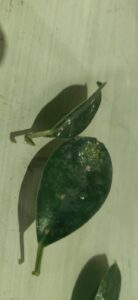
Another common pest found on banyan trees is mites. Severe infestations can lead to the formation of “spider webs” on the branch tips and cause widespread yellowing of the leaves. When encountering such situations, it becomes necessary to address banyan bonsai care by tackling the mite infestation.
Mealybugs are another pest that can affect banyan bonsai trees. They are characterized by whitish cottony spots, often found on the underside of leaves, with some infestations focusing on the roots. Mealybugs are usually observed during repotting, and it is advisable to remove them as part of banyan bonsai tree care.
It is important to note that insecticides containing Malathion can be harmful, and using oil treatments may not effectively address root mealybugs. In such cases, systemic treatments may be required to combat the infestation.
Excessive moisture or dryness is a common cause of banyan trees losing leaves without any apparent reason. Additionally, rapid exposure to cold air or intense sunlight can have similar effects. Therefore, proper banyan tree bonsai care involves maintaining a warm environment for your bonsai and allowing the soil to dry before watering. With proper care, the tree should start regrowing its leaves within 3-4 weeks.
Spray Neem oil with a pinch of washing powder every month to keep your banyan bonsai insect and pest free.
Bonsai trees thrive in small pots, leading to faster drying of their environment compared to plants in the ground or larger containers. Therefore, proper watering is crucial for the care of banyan tree bonsai. Regularly watering your banyan bonsai tree at appropriate intervals is essential, with a focus on watering its roots.
To determine if watering is necessary, check the moisture level of the soil. If it feels wet, your tree does not require water at that moment. However, if the soil is dry, it needs to be hydrated. Striking the right balance between insufficient and excessive watering is a challenge, but it is crucial for the care of banyan tree bonsai. When watering is needed, ensure thorough and deep watering, allowing the tree time to recover before watering again.
An effective bonsai watering technique is to place the entire pot in a sink or basin of water, allowing the water to soak through the drainage holes at the bottom. This method has been commonly used in bonsai care. Additionally, using a spray bottle to mist the foliage occasionally can provide relief to the roots, particularly in hot and dry weather conditions.
Passionate about Bonsai Plants?
Buy Online and 3 hours delivery service
FAQ
What are the challenges during care of Banyan bonsai tree ?
Banyan Bonsai is very easy to care for, just follow the guide.
What are the special measures to be taken while growing Banyan bonsai indoors?
Ample sunlight and good humidity levels works best for the Bonsai
Is banyan bonsai need watering regularly?
Banyan bonsai is a live tree, it requires watering almost daily depending upon season.
How long does it take to bonsai banyan?
When creating a bonsai tree from branch cuttings, it often takes several years for it to develop and resemble a mature bonsai tree. The banyan tree you mentioned, despite being 25 years old, is still considered relatively young in bonsai terms. Over time, a single mature banyan tree can develop multiple trunks and support roots, giving it the appearance of several trees combined or a forest-like aesthetic.
The growth and development of a bonsai tree require patience and careful cultivation. It involves shaping and training the tree’s branches, foliage, and roots to achieve the desired bonsai form. With proper care and nurturing the banyan tree bonsai can continue to evolve and mature, further enhancing its beauty and resemblance to a miniature tree in a natural landscape.
Is banyan tree suitable for bonsai?
Banyan is an excellent choice for Bonsai making and gardening.
Which God is in the banyan tree?
According to Hindu belief, Lord Krishna rests on the leaf of the Banyan Tree.
What is the life span of Banyan bonsai tree in india?
Banyan bonsais can live for up to 200 years. In India, there are many banyan trees which are more than 200 years old.
Why is the banyan tree special in India?
The Banyan tree is the National Tree of India. It is considered very pious in Buddhism, and Hinduism.
Banyan bonsai tree price in india
Banyan bonsais are generally pricey due to their age and the time taken to develop. Buy banyan bonsai tree online from Delhi Bonsai for the most transparent pricing. Banyan bonsai tree for sale in Delhi NCR and get it home delivered by Delhi Bonsai.
How can i make cutting from a Banyan bonsai tree near me?
During the month of June, you can make cuttings and air layering from your banyan bonsai tree.
Can a tree of bonsai ficus benghalensis be grown from seed
Yes, you can make the Banyan Bonsai tree from its seeds also.
Which is the luckiest bonsai tree?
Banyan Bonsai Tree, Jade Bonsai, Bodhi Bonsai, and Shami Tree Bonsai are a few lucky bonsai trees. They bring good luck and prosperity.
Our Motto
What you see is what you get
Delivery
Personalised delivery at door step
Mission
Creating green spaces
Look no further, with Delhi bonsai it will be delivered in 3 hours.
Watering method.

